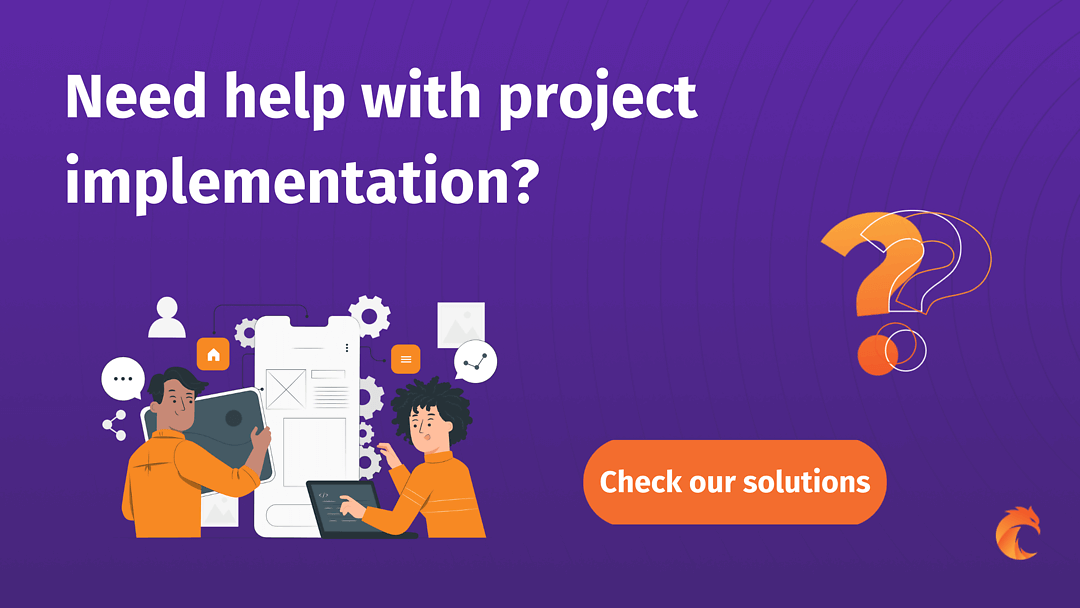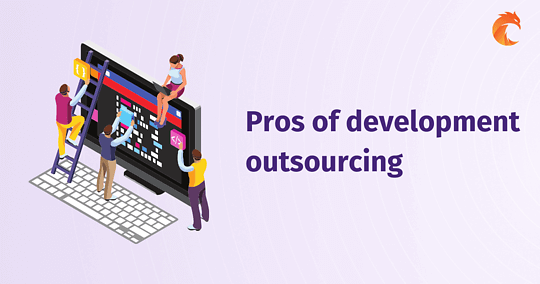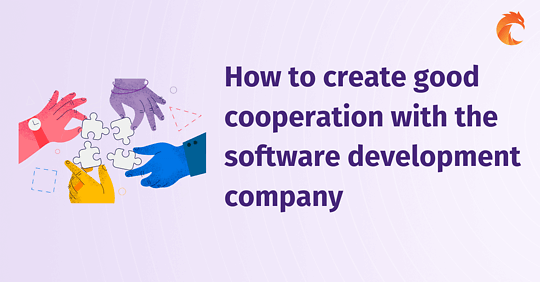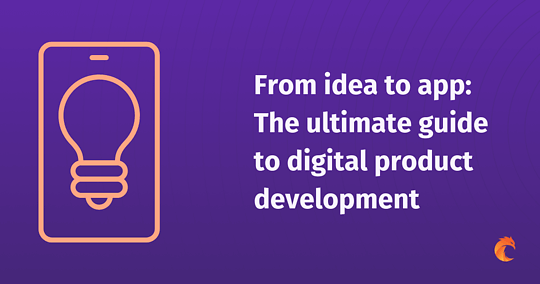
Choosing Your Tech Stack: A wide Guide for Businesses
The foundation of any software application lies in its tech stack. But how do you choose the right one for your business? This guide will help you to discover the tech stacks field, offering insights and recommendations for businesses of all sizes.
Introduction to Tech Stacks
What is a Tech Stack?
A tech stack, often referred to as a technology stack, encompasses the tools, frameworks, and technologies used to build and deploy a software application. It's the backbone of any digital product, from websites to mobile apps. The choice of a tech stack can significantly influence the performance, scalability, and maintainability of an application. It's not just about selecting the latest or most popular technologies but choosing the ones that align best with the project's goals and requirements. It’s about how the tools work together to deliver a seamless user experience. A well-chosen tech stack can lead to reduced development time, fewer bugs, and a more robust final product. On the other hand, a poorly chosen stack can lead to inefficiencies, increased costs, and potential security vulnerabilities.
The anatomy of a Tech Stack
Front-end vs. Back-end
The front-end, often referred to as the client-side, deals with everything the user interacts with directly. This includes the design, user interface, and user experience. It's where the magic happens, turning code into interactive visuals. The back-end, or server-side, handles data processing, storage, and server management. It's the engine room, ensuring everything runs smoothly behind the scenes.
Middleware and Third-party Integrations
Middleware acts as a bridge between the front-end and back-end, ensuring smooth data flow and communication. It can handle tasks like authentication, routing, and session management. It’s quite common to handle these operations on Back-end side.
Third-party integrations, on the other hand, are external services or tools integrated into an application to enhance its functionality. These can range from payment gateways and analytics tools to customer relationship management (CRM) systems and more. They can significantly boost an application's capabilities, but it's essential to ensure they're compatible with the chosen tech stack.
Why Your Tech Stack Matters
Impact on Product Performance
A well-optimized tech stack ensures that applications run smoothly, offering users a seamless experience. It affects load times, responsiveness, and overall user satisfaction. In today's fast-paced digital world, users have little patience for slow-loading apps or websites. A tech stack that prioritizes performance can be the difference between retaining a user or losing them to a competitor.
Scalability and Future Growth
As businesses grow, so do their digital products. The right tech stack should be able to handle increased traffic, feature additions, and other complexities without significant overhauls. Scalability isn't just about handling more users; it's about ensuring the application remains stable and performs well under increased load. It's about future-proofing the application, ensuring it can evolve with the business's needs.
Security Concerns
In the digital age, security breaches can be catastrophic. A robust tech stack includes security measures to protect against cyber threats, ensuring data integrity and user trust. From protecting user data to ensuring secure transactions, the chosen tech stack plays a pivotal role in safeguarding both the business and its users.
Popular web tech stacks to consider
Phoenix
Phoenix, a web development framework built on the Elixir programming language, is gaining traction as a top choice for modern web applications. Harnessing the power of the Erlang virtual machine (BEAM), Phoenix offers impressive concurrency, fault-tolerance, and real-time capabilities. Its real strength lies in its ability to handle a large number of simultaneous connections with minimal latency, making it particularly suited which is desired for any type of app, but it will especially stand out in applications that require real-time features, such as chat applications, live dashboards, and online multiplayer games. Phoenix also promotes clean and maintainable code through its well-structured pattern, making it easier for developers to write, test, and debug their applications. With its performance advantages and the growing popularity of Elixir, Phoenix is emerging as a formidable alternative to more established web frameworks, especially for businesses aiming to deliver high-performance, real-time web experiences.
Phoenix is the most loved web framework in the world what confirmed the 2023 Developer Survey.
Read our article Why Elixir & Phoenix is a great choice for your web app
LAMP Stack
The Reliable Choice The LAMP stack, an acronym for Linux, Apache, MySQL, and PHP, has been a staple in the web development world for years. Its longevity speaks to its reliability and robustness. Linux offers a stable operating system, Apache ensures efficient server management, MySQL provides a reliable database system, and PHP is a server-side scripting language known for its versatility. For businesses looking for a tried-and-tested solution, especially for smaller and less complex web applications, the LAMP stack remains a top contender. Its vast community support means a plethora of resources, tutorials, and experts available to assist in any challenges.
MEAN and MERN
The JavaScript Champions JavaScript has taken the tech world by storm, and its full-stack solutions, MEAN (MongoDB, Express.js, Angular.js, Node.js) and MERN (replacing Angular.js with React.js), are testament to its flexibility and performance. These stacks offer a unified language for both front-end and back-end development, streamlining the development process. They're particularly suited for dynamic, single-page applications and offer rapid development capabilities. With a strong community backing and continuous updates, they're ideal for businesses looking to stay on the cutting edge of web development.
Ruby on Rails
Rapid Development Ruby on Rails, or simply Rails, is a web application framework written in Ruby. It emphasizes convention over configuration and the DRY (Don't Repeat Yourself) principle. This leads to cleaner code, faster development, and fewer bugs. Rails is particularly popular among startups due to its rapid prototyping capabilities. Its built-in tools and plugins can significantly speed up the development process, allowing businesses to bring their products to market faster. In comparison to Elixir & Phoenix, it won’t scale so easily though, so if you’re looking for more future-proof solution you should rather pick Phoenix.
Popular mobile tech stack to consider
React Native: The Cross-Platform Maestro
React Native, an offshoot of Facebook's renowned React library, has firmly established itself in the cross-platform mobile development arena. It empowers developers to craft high-quality applications for both Android and iOS using a singular JavaScript codebase. This unified approach not only accelerates the development timeline but also ensures a consistent look and feel across both platforms. React Native's emphasis on native components guarantees that applications retain the performance and user experience characteristics of native apps.
Its modular architecture facilitates rapid iteration, allowing developers to integrate native code when needed. With a vibrant community backing it, React Native boasts a rich ecosystem of libraries and tools, making it an attractive choice for businesses aiming for a broad mobile presence without the redundancy of separate platform-specific codebases.
On our blog you can find in depth comparison of React Native vs Flutter.
Flutter's Rise in Popularity
Flutter is developed by Google and quickly becoming a favorite for mobile app development. Its unique approach allows developers to write code once and deploy it on both Android and iOS platforms. This not only speeds up the development process but also ensures consistency across platforms. With its widget-based architecture, Flutter offers a high degree of customization, enabling the creation of visually stunning apps. As mobile usage continues to grow, businesses looking to offer a top-tier mobile experience should seriously consider Flutter.
What to Consider When Choosing a Tech Stack - project requirements and goals
Before diving into tech stack selection, it's essential to have a clear understanding of the project's objectives. Are you building a simple website, a dynamic web application, or a mobile app? Each project type may have different tech stack requirements. Additionally, consider the long-term goals. If you plan to add more features or scale the application in the future, ensure the chosen tech stack can accommodate these expansions without major overhauls.
The proficiency of the development team is a significant factor in tech stack selection. It's crucial to choose technologies that the team is familiar with or can quickly learn. A tech stack that aligns with the team's expertise can lead to faster development, fewer bugs, and a more efficient workflow.
The Role of Scalability in Tech Stack Selection
Vertical vs. Horizontal Scaling Scalability
It is a term often thrown around in tech discussions, but its implications are vast. Vertical scaling involves beefing up your existing server resources – think of it as upgrading to a more powerful machine. Horizontal scaling, on the other hand, involves adding more servers to your setup, akin to having multiple machines working in tandem. While vertical scaling has its limits (there's only so much you can upgrade a single machine), horizontal scaling offers virtually limitless growth potential. However, not all tech stacks handle horizontal scaling efficiently, so it's crucial to choose one that does if you anticipate significant growth. As a side note, one of the reasons why our core technology is Elixir, is its ability to scale incredibly well both horizontally, as well as vertically.
Preparing for Future Growth
It's not just about handling the users you have now, but also the users you might have in the future. As your business grows, your tech stack should be able to accommodate increased traffic, more extensive data processing, and additional features. This might mean ensuring easy integration of new tools, seamless addition of more servers, or the ability to handle more complex tasks without a drop in performance. Forward-thinking in tech stack selection can save significant time, money, and headaches down the line.
Security: A Non-negotiable Factor
Common Security Threats
The digital realm is rife with potential threats. From SQL injections, where hackers can gain access to your database, to cross-site scripting, where malicious scripts are injected into trusted websites, the dangers are real and ever-present. Denial of Service (DoS) attacks, where servers are overwhelmed with traffic, can also cripple a business. Understanding these threats is the first step in ensuring that the chosen tech stack can effectively counter them.
Tech Stacks with a Reputation for Security
Some tech stacks are renowned for their security features. For instance, Phoenix thanks to its built-in mechanisms as well as open-source libraries such as Sobelow can easily counter common security threats. When choosing a tech stack, it's worth considering its security track record, community support around security issues, and any built-in security features it might offer.
The Cost of Getting It Wrong
Imagine having to change the foundation of a building halfway through construction. That's what changing tech stacks mid-project can feel like. It's not just costly in terms of money but also time and resources. There's the risk of compatibility issues, data migration challenges, and potential performance drops.
Beyond the immediate costs of development, a poorly chosen tech stack can lead to lost revenue. If users experience slow load times, frequent crashes, or security issues, they're likely to abandon the platform. This can result in lost sales, increased customer support costs, and a tarnished brand reputation.
Seeking Expert Advice
If the world of tech stacks feels overwhelming, it might be time to bring in the experts. Tech consultants can evaluate your project's unique needs, considering factors like budget, team expertise, and long-term goals, to recommend the most suitable tech stack.
A tech consultant brings a wealth of experience and a fresh perspective. They can identify potential pitfalls, recommend best practices, and even assist in the implementation process. Their expertise can be invaluable in ensuring the project's success.
Conclusion: Making an Informed Decision
In the ever-evolving world of technology, staying informed is crucial. The right tech stack can set a project up for success, ensuring optimal performance, security, and scalability. By considering factors like project requirements, anticipated growth, team expertise, and security needs, businesses can make an informed decision that pays dividends in the long run.
FAQ
What is a Tech Stack and why is it crucial for digital projects?
A Tech Stack refers to the collection of technologies, frameworks, and tools used to build and deploy software applications. It's essential as it influences the application's performance, scalability, maintainability, and overall success.
How does the choice of a Tech Stack impact the product's performance and user experience?
The tech stack significantly affects load times, responsiveness, and user satisfaction. A well-optimized stack ensures a seamless experience, while a poor choice can lead to inefficiencies and user frustration.
What should businesses consider when choosing a Tech Stack for scalability and future growth?
Businesses should select a tech stack that accommodates growth, handles increased traffic, and allows for the addition of features without major overhauls, ensuring the application remains stable and performs well as demands increase.
How do security concerns shape the choice of Tech Stack?
Security is paramount in digital products. A robust tech stack should include measures to protect against cyber threats, ensuring data integrity and building user trust.
What are some popular Web and Mobile Tech Stacks mentioned?
Popular web tech stacks include Phoenix (Elixir), LAMP, MEAN, MERN, and Ruby on Rails. For mobile development, React Native and Flutter are highlighted for their cross-platform capabilities and performance.
How does the proficiency of the development team influence the Tech Stack selection?
A tech stack that aligns with the team's skills leads to faster development, fewer bugs, and a more efficient workflow. It's crucial to choose technologies that the team is comfortable with or can quickly adapt to.
What are the long-term implications of choosing the wrong Tech Stack?
A poorly chosen tech stack can lead to increased development costs, compatibility issues, data migration challenges, and could negatively impact the user experience, leading to lost revenue and a tarnished brand reputation.

 10 min read
10 min read
 13 Mar 2024 (created at 8 Sep 2023)
13 Mar 2024 (created at 8 Sep 2023)







